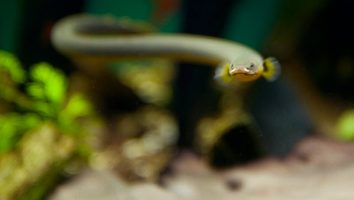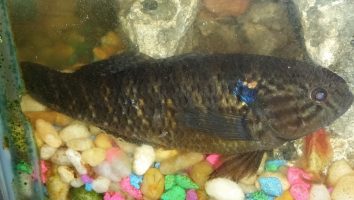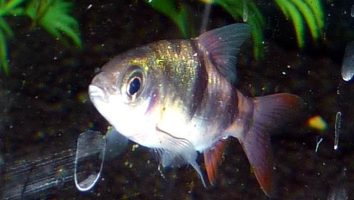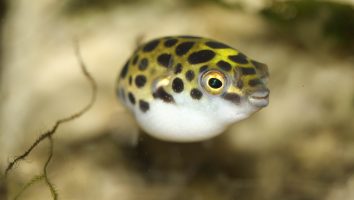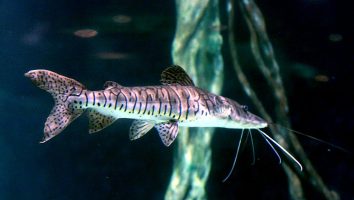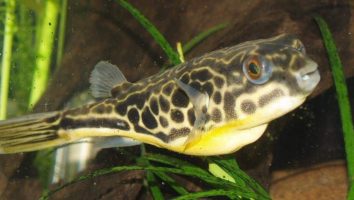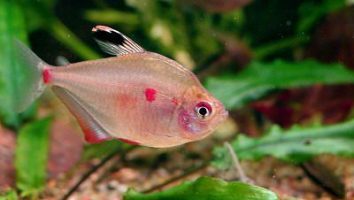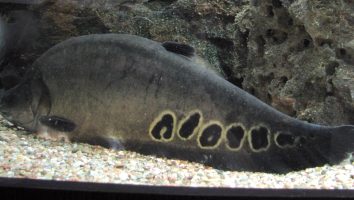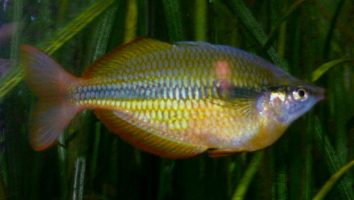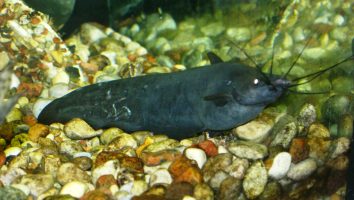The scissortail rasbora is a beautiful and peaceful freshwater fish that is perfect for beginners. They are easy to care for and make a great addition to any community tank.
This guide will teach you everything you need to know about scissortail rasbora care. You’ll learn about their diet, size, lifespan, and more!
Table of contents
Species overview
The scissortail rasbora (scientific name: Rasbora trilineata) is a freshwater fish that’s native to various parts of Southeast Asia.
They are most commonly found in Thailand, Malaysia, and Indonesia. However, they have also been spotted in Singapore, Laos, and Cambodia.
These fish prefer slow-moving waters with a lot of vegetation. This could be anything from ponds and lakes to swampy areas and slow-moving rivers.
Scissortail rasboras are relatively small fish, only growing to be about 2 inches in length. Despite their small size, they are very active swimmers and are always on the move.
They are also very social fish and do best when they are kept in groups. In the wild, they are known to form large shoals (groups) of up to 100 fish.
Appearance

The first thing you’ll notice about this striking fish is their long, flowing tail. This is easily the most noticeable feature and gives them their name. The tail itself is forked and has a lot of movement to it when they’re swimming.
The rest of their body is long and slender with a slight taper towards the tail. They have a relatively small head with large eyes.
The fins on this fish are all fairly small and delicate. The dorsal fin starts a little over halfway back on the body and has a lot of movement to it.
The anal fin is a bit shorter and starts closer to the back of the fish. The caudal peduncle is very thin which gives the appearance of the tail being even longer than it actually is.
The pectoral fins are small but still noticeable. They have a dark line that runs from the back of their eye and down the length of their body. This line is more pronounced in males than females.
The Scissortail Rasbora is a very peaceful fish that does well in groups. They’re a schooling fish by nature so it’s best to keep them in groups of 6 or more.
Lifespan
The scissortail rasbora lifespan is around 4 years on average. However, with proper care, they can live up to 6 years in captivity.
There are a number of things that can impact a scissortail rasbora’s lifespan. Poor water quality, for example, can shorten their life significantly.
Also, if they’re not given enough to eat they can also die prematurely. In the wild, these fish are used to a constant supply of food so they need to be well-fed in captivity.
Size
The maximum size for a Scissortail Rasbora is approximately 2 inches in length.
Tank
Tank Size
The recommended tank size for scissortail rasboras is 30 gallons. These fish are active swimmers and do best in a long tank that allows them plenty of room to swim. A 30 gallon tank is the minimum size we recommend but if you have the space, a larger tank is always better.
Water Parameters
The scissortail rasbora is a tropical fish, so it prefers warm water. You’ll need to maintain a temperature between 72 and 82 degrees Fahrenheit to keep them healthy.
This fish is also quite sensitive to changes in water parameters. Sudden changes can cause stress which weakens their immune system and makes them more susceptible to disease.
To avoid this, test the water frequently and only make small changes at a time.
Here are a few water parameters to keep in mind.
- Water Temperature: 72-82 degrees Fahrenheit
- pH Levels: 6.0-7.8
- Water Hardness: 2-12 dGH
- Alkalinity Levels: 3-10 dKH
What To Put In Their Tank
Scissortail Rasboras are a peaceful and relatively easy to care for freshwater fish. They’re a good choice for beginner aquarists and make a great addition to community tanks.
When it comes to setting up the inside of their tank, there are a few things you’ll want to keep in mind.
The first is that these fish like to have some hiding places. This can be in the form of plants, caves, or anything else that provides them with a sense of security.
Scissortail Rasboras are also a schooling fish. This means they like to swim in groups. As a general rule, you should aim to have at least 6 of them in a tank. If you can manage more, that’s even better!
The substrate in their tank can be either sand or gravel. We prefer sand since it’s softer on their delicate fins, but ultimately it’s up to you.
Plants are a great addition to any freshwater aquarium, and Scissortail Rasboras are no exception. These fish love to swim around and explore their surroundings so having some vegetation to add some color and interest to their tank is a great idea.
Some good plants to consider are Hornwort, Java Fern, or Water Wisteria.
Common Diseases
The scissortail rasbora is a hardy fish that doesn’t get sick often. However, there are still a few diseases that you need to be aware of.
The most common illness that these fish experience is ich. This is a parasitic infection that manifests itself as white spots on the body of your fish.
If left untreated, ich can be fatal. However, it’s relatively easy to treat if you catch it early. The most important thing is to act quickly and consult your vet.
Another disease that scissortail rasboras can experience is hole-in-the-head disease. This is an infection that affects the head of your fish, causing pits and holes to form in the skin.
This disease is also fairly easy to treat if you catch it early. However, it can be fatal if it’s left untreated for too long.
As with ich, the best way to prevent these diseases is to maintain clean and stable water conditions in your tank. A healthy environment will lead to healthier fish who are more resistant to disease.
Behavior & Temperament
The scissortail rasbora is a schooling fish, which means it does best when it’s in a group. In the wild, these fish school in groups of 20 or more. So, if you’re keeping them in captivity, it’s best to have at least six.
They’re peaceful fish that get along well with others. The only time you might see aggression is when two males are competing for a female’s attention. But even then, it’s nothing to worry about.
Scissortail rasboras are active fish that love to swim. They’re constantly on the move, exploring every inch of their environment. They’re not afraid to venture to the top of the tank, but they spend most of their time near the middle or bottom.
Tank Mates
The scissortail rasbora is a peaceful community fish that does well in a variety of tanks.
These fish are schooling fish, so they should be kept in groups of at least six. This will help reduce their stress levels and make them feel more comfortable in their environment.
When choosing scissortail rasbora tank mates, it’s important to choose fish that occupy different levels of the water column.
Scissortail rasboras are mid-dwellers, so they do best with fish that occupy the top or bottom of the tank. This will help create a more natural feel for your fish and reduce aggression levels.
Some good scissortail rasbora tank mates include:
- Tetras
- Guppies
- Mollies
- Platies
- Swordtails
- Danios
- Corydoras
Breeding
Scissortail Rasboras are easy to breed in the home aquarium. All you need is a group of 6-8 fish, and a well-planted tank with a dark substrate. These fish will typically spawn in the morning, so it’s a good idea to check on them then.
The female will lay her eggs in the plants, and the male will fertilize them. After that, the parents will eat the eggs if they’re not removed from the tank. So, it’s important to remove the adults as soon as the eggs are laid.
You can raise the fry in a separate tank or in the main tank. If you choose to do the latter, make sure that the plants are dense enough to provide cover. The fry will need to be fed baby brine shrimp or other small live foods.
Conclusion
The Scissortail Rasbora is a peaceful, hardy fish that is perfect for the beginner aquarist. They are easy to care for and are very adaptable to a variety of different water conditions.
They are also a very active fish that is always on the move, which makes them a fun addition to any tank.
If you are looking for a beginner fish that is low-maintenance and still very active, then the Scissortail Rasbora is a great choice for you!

